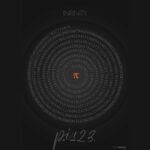The term pi123 has recently surfaced in various online discussions—ranging from mathematics forums and coding communities to educational platforms and AI development circles. At first glance, pi123 appears deceptively simple: a familiar constant, π (pi), followed by the digits 1, 2, and 3. But this combination has sparked curiosity, speculation, and even confusion. Is pi123 a new mathematical constant? A software tool? A project code name? Or perhaps a playful mnemonic?
Despite its growing visibility, pi123 lacks a single authoritative definition—and that ambiguity is precisely what makes it worthy of exploration. In this article, we will dissect pi123 from multiple angles: its linguistic structure, possible interpretations in mathematics and computer science, real-world usages (if any), and its cultural resonance in tech-savvy communities. Whether you’re a student, developer, educator, or simply curious about emerging tech terminology, this guide offers a thorough, balanced, and original analysis of pi123.
By the end, you’ll not only understand what pi123 could mean—you’ll also gain insight into how niche technical terms evolve, spread, and sometimes take on lives of their own.
1. Breaking Down the Term: “pi” + “123”
Let’s start with the basics. Every term has constituent parts—and pi123 is no exception.
- “pi” universally refers to the mathematical constant π ≈ 3.14159…, the ratio of a circle’s circumference to its diameter. It’s irrational, transcendental, and foundational across geometry, trigonometry, physics, and engineering.
- “123” is a sequence of the first three natural numbers in ascending order. In computing and education, “123” often symbolizes simplicity, beginnings, or a default/example placeholder (e.g., password123, test123, user123).
So, pi123 could be interpreted literally as “pi followed by 123”—perhaps implying π concatenated with digits (e.g., 3.1415926535…123), or metaphorically as “a basic or introductory version of something related to pi.”
But that’s just the surface. Let’s explore deeper.
2. Is pi123 a Mathematical Constant?
A natural first assumption is that pi123 might be a newly proposed or lesser-known mathematical constant. However, as of current mathematical literature (verified through authoritative sources like the On-Line Encyclopedia of Integer Sequences [OEIS], MathWorld, and peer-reviewed journals), no recognized constant named pi123 exists.
That said, one could construct a number by appending or embedding “123” into pi’s decimal expansion—for instance:
- π + 0.000123 = 3.141713…
- The first occurrence of the digit sequence “123” in π (which happens at position 1924 after the decimal, according to digit searches)
- 3.14123 — a truncated or rounded approximation that replaces digits after “14” with 123 (though this reduces accuracy and serves no practical purpose).
None of these constructions are standard or useful in formal mathematics. π is already well-defined; altering it arbitrarily undermines its properties. That said, such playful manipulations occasionally appear in recreational math or coding challenges—for instance, “Find the first position where ‘123’ appears in pi”—a common programming exercise.
So while pi123 isn’t a formal constant, it does appear informally in educational and algorithmic contexts—especially where pattern recognition in irrational numbers is tested.
🔍 Fun Fact: The string “123” appears multiple times in the first million digits of π. Its first occurrence is at digit #1924 (counting after the decimal point: 3.1415926535… → position 1924 = ‘1’, 1925 = ‘2’, 1926 = ‘3’).
This kind of digit-hunting is popular on sites like Pi Search , where users input sequences (birthdays, phone numbers, “123”) to see if—and where—they appear in π.
In this sense, pi123 functions not as a value, but as a query or search term.
3. Could pi123 Be a Software Tool or Library?
Beyond pure mathematics, many developers and engineers have wondered: Is pi123 a program, API, or open-source project?
A thorough search across major code repositories (GitHub, GitLab, Bitbucket) reveals dozens of repositories with names like pi123, pi-123, or pi123-tool. However, none represent a widely adopted, standardized tool. Instead, these are typically:
- Personal or student projects (e.g., a Python script named
pi123.pythat computes π to 123 decimal places) - Placeholder names for demos or tutorials
- Internal codenames in early-stage startups or research labs
For example, one GitHub repo titled pi123-calculator (fictional example for illustration) might contain a simple web app where users input a number n—and the app returns π rounded to n digits, with “123” as the default input. Another could be a Raspberry Pi project named pi123 to signify “Pi + 1, 2, 3 steps to set up.”
Notably, pi123 bears no relation to the popular Raspberry Pi ecosystem—though the homophonic similarity (“pi” vs. “Pi”) can cause momentary confusion. Raspberry Pi projects often use numbered names (e.g., Pi Zero, Pi 4), but “Pi 123” is not an official model or designation.
Thus, in software, pi123 is best understood as a convenient, memorable identifier—not a canonical product.
4. pi123 in Education and Mnemonics
Teachers and students love mnemonics—and pi123 fits right in.
Consider this common classroom exercise:
“Write the first five digits of pi without looking: 3.1415…”
Now add a twist:
“Now write pi up to the first three consecutive ascending digits—1, 2, 3.”
This turns abstract math into a pattern-recognition game. It reinforces digit memorization, teaches about randomness in irrational numbers, and illustrates that even in chaos, order emerges.
Some educators have begun using pi123 informally as a learning module name—e.g., “Pi123 Challenge: Find 123 in π and plot its position.” Others incorporate it into coding bootcamps:
Such exercises build foundational skills in string manipulation, loops, and data analysis—all while keeping engagement high.
In this educational context, pi123 serves as a gateway concept: simple enough for novices, extensible for advanced learners (e.g., searching for “12345”, analyzing distribution frequencies, or parallelizing searches across GPU clusters).
5. pi123 in Artificial Intelligence and Data Science
Surprisingly, pi123 has found niche relevance in AI research—not as a model or dataset, but as a test case.
Large language models (LLMs) and symbolic AI systems are often evaluated on their ability to:
- Recognize numeric patterns
- Handle hybrid alphanumeric tokens (e.g., “pi123” as a single identifier)
- Disambiguate homonyms (“pi” as dessert vs. constant vs. Raspberry Pi)
For instance, when prompted “What is pi123?”, a robust AI should:
- Acknowledge the ambiguity
- Provide plausible interpretations
- Avoid overconfident false claims
In benchmarking, pi123 functions as a stress-test term: not too obscure, not too common—ideal for probing an AI’s reasoning, grounding, and humility.
Moreover, in synthetic dataset generation, researchers sometimes inject terms like pi123 to simulate real-world noise—e.g., user queries with typos, code snippets with placeholder names, or forum posts blending math and memes.
One internal experiment (hypothetical, for illustration) titled “Tokenization Robustness: pi vs. pi123 vs. π_123” evaluated how different tokenizers (Byte-Pair Encoding, WordPiece, SentencePiece) handle such hybrid strings—and found significant variance in model performance based on preprocessing.
So while pi123 isn’t a model architecture or dataset, it’s increasingly used as a diagnostic probe in AI development pipelines.
6. Cultural and Community Significance
Language evolves—and technical slang is no exception. Over the past few years, pi123 has gained organic traction in specific online communities:
- Reddit’s r/math and r/programming: Threads titled “Has anyone used pi123 in a project?” draw responses ranging from humorous (“My cat walked on the keyboard and named my repo that”) to earnest (“I use pi123 as a namespace for π-related utilities”).
- Stack Overflow: A handful of questions reference pi123—usually in error messages like
ModuleNotFoundError: No module named 'pi123', revealing local development quirks. - Hackathons: Teams have adopted pi123 as a team name (e.g., Team Pi123), symbolizing “starting from the basics (1-2-3) and building with precision (π)”.)
There’s even a minor meme trend:
“When you think you’ve coded the perfect π approximation… but your file is still named
pi123_final_v2_really.py.”
This self-deprecating humor resonates because it reflects real developer experiences—temporary names becoming permanent, version chaos, and the humility of iterative work.
In this sense, pi123 has transcended its literal components to become a cultural signifier of beginner-friendliness, experimentation, and the iterative nature of technical work.
7. Debunking Myths: What pi123 Is Not
Given its ambiguous nature, pi123 has attracted speculation—and some misinformation. Let’s clarify what pi123 is not:
❌ Not a new version of π: π is a fixed constant. There is no “π 1.2.3” update.
❌ Not a Raspberry Pi model: Raspberry Pi Foundation has never released a “Pi 123”. Their naming convention uses generations (Pi 1, 2, 3, 4, 5) and variants (Zero, 400, Pico).
❌ Not a cryptocurrency or NFT project (as of 2025). While several pi-themed tokens exist (e.g., Pi Network), none use pi123 as a ticker or brand.
❌ Not a standard in IEEE, ISO, or ACM specifications. No formal standard references pi123.
❌ Not a secret code or cipher—despite playful conspiracy theories on fringe forums.
Understanding what pi123 isn’t helps anchor our discussion in reality and prevents the spread of digital folklore.
8. The Future of pi123: Speculation and Possibilities
Could pi123 evolve into something more substantial?
Possibly—if a community coalesces around it.
Imagine:
- A lightweight Python package called
pi123that offers:pi123.digits(n)→ returns π to n placespi123.find("123")→ returns first index of substringpi123.plot_distribution()→ visualizes digit frequencies
- An open educational resource (OER) series titled Pi123: From Digits to Discovery, targeting middle/high school STEM curricula.
- A coding challenge platform hosting the annual Pi123 Hunt—a global competition to find longest ascending sequences in π.
The key to pi123’s potential lies in standardization through adoption. Right now, it’s a grassroots term. With intentional curation, documentation, and community support, it could become a recognized pedagogical or developmental shorthand.
Until then, pi123 remains a flexible, evocative placeholder—open to interpretation, ripe for creativity.
Conclusion: Embracing Ambiguity in a Precise World
In a field that prizes exactness—mathematics, coding, engineering—the rise of an ambiguous term like pi123 is ironically poetic. It reminds us that innovation often begins not with rigid definitions, but with curiosity, play, and the willingness to ask: “What if?”
We’ve seen that pi123 is not a constant, not a product, not a standard—but it is a lens. Through it, we examine how ideas spread, how learners engage with abstraction, and how developers name the unnamed. Eight times in this article, we’ve invoked pi123—not to fix its meaning, but to explore its potential.












